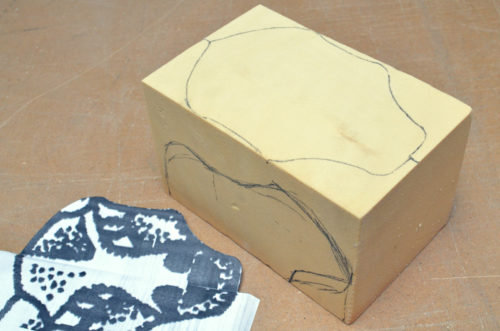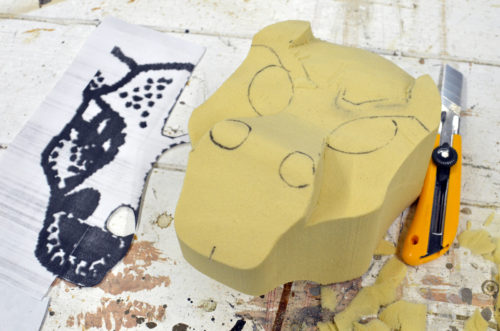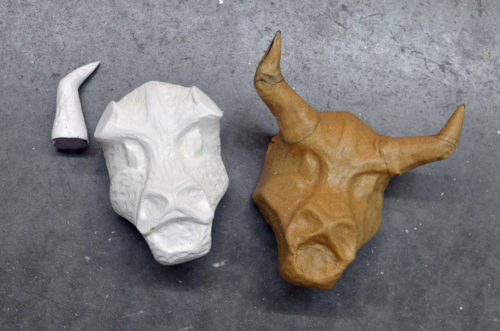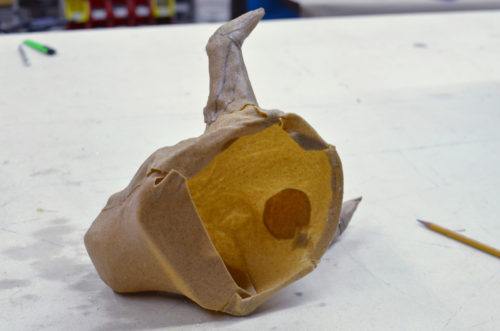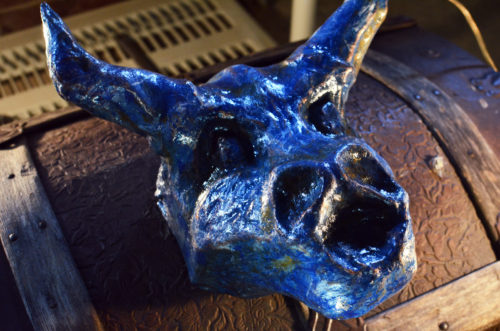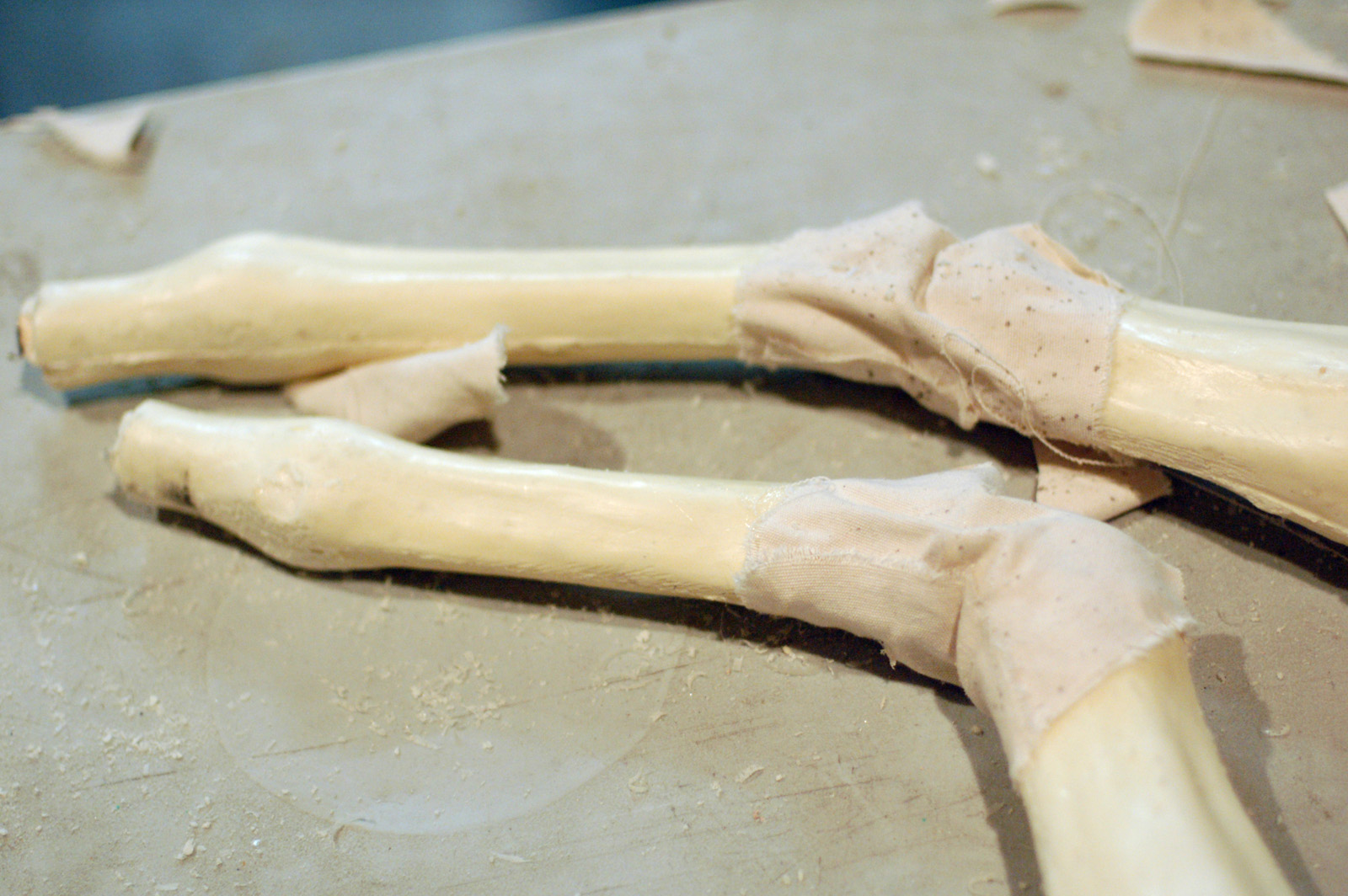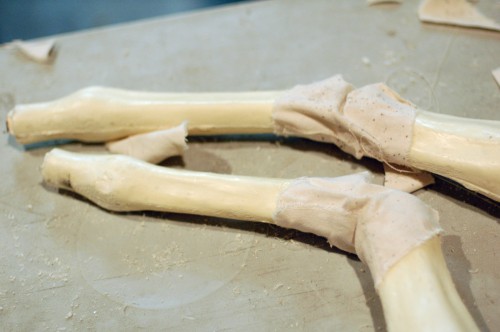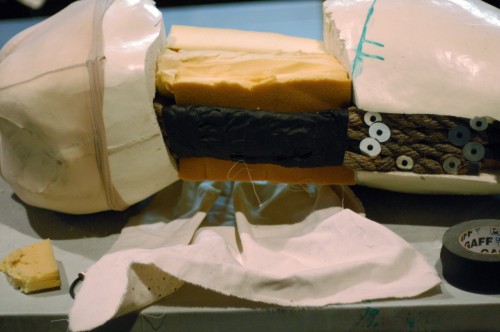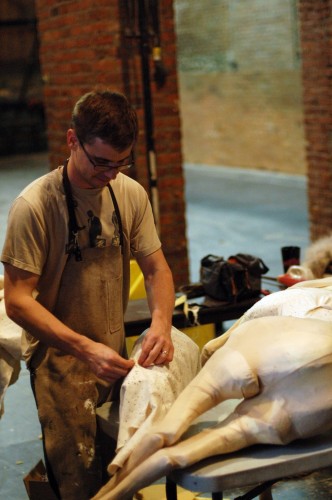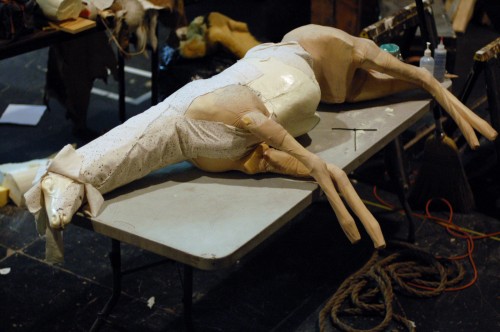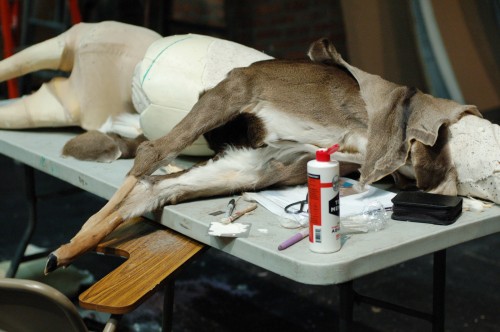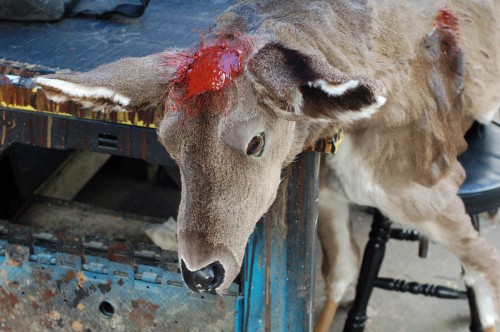I often see a lot of products advertise themselves as “low odor”. I also hear the occasional prop maker mention that one product is safer because it “smells better” than an alternative.
What is smell? Smell means you are detecting airborne particles, fumes, gases, vapors, dusts and mists. And if these tiny airborne things are reaching your nose, than you can be sure some of them are entering your lungs, and from there, your bloodstream. So smelling something is a warning that you may be breathing hazardous substances.
But the smell is not related to the toxicity of that substance. In fact, particularly odorous substances can, in some situations, be safer than their low-odor counterparts. Relying on your sense of smell is a poor method of determining the quality of the air you are breathing and whether you should be wearing a respirator or working in a spray booth. Let’s see why.
First, a brief foray into the world of measuring toxic exposure amounts, as well as how we measure “smell”. You need the MSDS to know what chemicals are in the products you are using and in what quantities.
OSHA measures the amount of a substance in the air using “parts per million”, or PPM. For example, if Chemical X is recorded at 1000 PPM, than for every million atoms of air in a room, one thousand of those are Chemical X. The other 999,000 are probably atoms of oxygen, nitrogen, carbon dioxide, water vapor and so forth.
To determine the safe level that certain chemicals can be worked at without causing harm, OSHA has a number of measurements related to the threshold limit value (TLV). The TLV gives a number in PPM; above that number is harmful, below is not. The TLV is indicated in a number of ways. There is the “ceiling value”, or TLV-C, which is the amount that should never be exceeded. The TLV-C is usually pretty high, because it takes a lot of any single chemical to harm you in one breath. More common is the time-weighted average (TLV-TWA). This gives you the average level of a chemical exposure over a period of time (usually eight hours unless otherwise indicated).[ref]You will also run across the PEL (Permissible Exposure Limit) of a chemical. This is the actual legal limit established by OSHA, above which an employer cannot expose its workers to. You have to check what the PEL is measure in; a TLV-TWA for eight hours is often used, but it may also a shorter exposure time or even a ceiling limit.[/ref] This number is far lower than the TLV-C, because you are being continuously exposed to a certain level over an extended time.[ref]Many other organizations have their own standards and measurements, and not every chemical has been measured in every way. So acetone has a TLV-TWA of 500 PPM, but the TLV-C has not been established by OSHA. It does, however have an IDLH (Immediately Dangerous to Life or Health) of 2500 PPM; this is typically a bit stronger than TLV-C, indicating you can probably die with a short exposure (under 30 minutes) at this level.[/ref]
Let’s look at acetone. Acetone has a TLV-TWA of 500 ppm. That means that over an eight hour day, your body has been harmed in some way if you have breathed, on average, 500 molecules of acetone with every million pieces of air. It may be higher at times—such as when you open a can of acetone—and lower at other times, such as when it has all evaporated and you are working on something else.
Getting back to smell, the other important measurement is the Odor Threshold (OT). This measurement, also in PPM, indicates at what concentration you can smell that particular chemical. Acetone has an OT of 62 PPM.
Let’s see what happens. You are in your shop working with acetone. It fills the air at 30 PPM. You keep working with it. It is now 62 PPM; you start to get a whiff of that distinctive acetone smell. “Uh oh.” you think. “Better open a window and set some fans up.” The increased ventilation brings the concentration of acetone back down to 50 PPM. You no longer smell it. During this whole time, your exposure to acetone never even gets close to 500 PPM because the smell alerts you to the fact that you are being exposed; you smell it in a concentration far below what is dangerous to breath.
Now let us look at another chemical common in the props shop. Hexane (or n-hexane) is used as a solvent, and is found in some cleaners and degreasers, as well as in adhesives, particularly fast-drying glues or cements intended for leather. Hexane has  a TLV-TWA of 50 PPM and an OT of 130 PPM.
Let’s step through another typical day. It’s the morning and you are gluing some leather together. Your exposure to hexane creeps up to 80 PPM for a few minutes. You clean something off with a hexane-containing cleaner and the concentration of hexane goes up to 100 PPM. You work on something else for a few hours and the level of hexane drops to 10 PPM as it evaporates. In the afternoon, you are using some rubber cement and white-out (both of which typically contain hexane) and your exposure goes back up to 60 PPM. In fact, by the end of the day, your average exposure (your TLV-TWA) has been around 55 PPM—above the limit of 50 PPM, meaning you inhaled a harmful amount. However, the level never even approached the OT of 130 PPM, so you never smelled it.
In other words, if you relied on your sense of smell to warn you of dangerous chemical exposure, it would have failed you in this case.
Any chemical with an OT above its TLV-TWA will not warn you with its scent before you are exposed to dangerous levels. Some chemicals lack any adequate warning signs for overexposure. The cyanates used in polyurethanes popularly used in molding and casting are particularly egregious. For instance, Methylene diphenyl diisocyanate (MDI) is commonly found in two-part rigid polyurethanes and polyurethane foam. Though one of the least toxic of the isocyanates, it still causes harm at low levels[ref]See this compilation of health hazards of MDI.[/ref]. Exposure can also create sensitization or allergies, which leads to violent or even fatal reactions in workers exposed to even a small amount. The TWA is only 0.005 PPM (the PEL is actually 0.02 PPM, but that is a ceiling limit). The OT has not even been established, but you can be expected to have some warning in the form of eye and nose irritation around 0.05 to 0.1 PPM. [ref]Occupational Health Guideline for Methylene Bisphenyl Isocyanate (MDI), US Dept of Health and Human Services, 1978.[/ref] In other words, you may not have any warning until you have been exposed to at least ten times over the amount that is safe to breathe over eight hours, or even five times the maximum amount you should breathe at any one time. Even then, you may not correlate your runny nose or watery eyes to the polyurethane; it has no distinctive smell, so you may just continue on, thinking “Hey, this is great. It doesn’t smell bad, so it must be safe to breathe.”
That’s wrong. Dead wrong.
